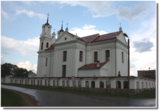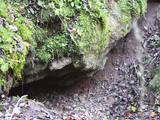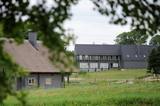| Nr | Nosaukums | Apraksts |
|---|---|---|
|
Restorāns "Kapteinis&Grants" atrodas pie viesu nama „Villa Elizabete”. Sezonas laikā darbojas vasaras terase, bet aukstā laikā maltīti var ieturēt kamīnzālē – bibliotēkā. Latviešu virtuve: Marinēta Baltijas siļķe ar biezpienu, baraviku krēmzupa, grilēta cūkgaļas karbonāde, jaunlopa gaļas steiks, grilēts līnis. Īpašais ēdiens: Kapteiņa Granta siera kūka. |
||
|
No Cēsu Sv. Jāņa luterāņu baznīcas (viena no senākajām Vidzemes mūra celtnēm) torņa paveras plašs skats uz Cēsu vēsturisko centru un plašu apkārtni (līdz pat Zilamkalnam). Savukārt, no Cēsu pilsdrupu (viens no spēcīgākajiem Livonijas ordeņa cietokšņiem Baltijā) Rietumu torņa var baudīt skatus uz Pils parku.
|
||
|
Pilsētai nozīmīgākais periods ir saistāms ar laiku no 1561. - 1795. g., kad Jelgavas novads ietilpst Kurzemes un Zemgales hercogistes sastāvā. Kad Jelgava iegūst hercoga rezidences (1567. g.) un hercogistes galvaspilsētas (1616. g.) statusu, sākās strauja pilsētas attīstība, kas visaugstāko punktu iegūst hercoga Jēkaba valdīšanas laikā. Pēdējo divu Kurzemes hercogu - Ernsta Johana Bīrona un viņa dēla Pētera valdīšanas laikā tiek dibināta (1775. g.) Pētera akadēmija (Academia Petrina) - pirmā Latvijas augstskola, 1816. g. dibināta Kurzemes Literatūras un mākslas biedrība, 1822. g. iznāk pirmā avīze latviešu valodā "Latviešu Avīzes", 1802. g. top Latvijā pirmā teātra ēka, bet 1898. g. - pirmā muzejam domātā ēka. 1937. g. Jelgavas pilī izvieto Latvijas lauksaimniecības kameru, bet pēc diviem gadiem atklāj Jelgavas Lauksaimniecības akadēmiju. 1944. g. vasarā gāja bojā gandrīz visa pilsētas vēsturiskā apbūve un mākslas vērtības. Pēc 2. pasaules kara Jelgavu atjaunoja. Tikko kā ir atjaunots arī Sv. Trīsvienības baznīcas tornis, kurā šobrīd ir izveidots viens no Latvijas labākajiem interaktīvajiem muzejiem (ļoti draudzīgs ģimenēm ar bērniem). |
||
|
Atrodas nelielās Dvietes centrā. Tās baltais stāvs ir redzams jau pa lielāku gabalu. Pirmo koka baznīcu šeit cēla 1775. g. vietējās muižas īpašnieka grāfa J. K. Višlinga vadībā. Pēcāk dievnamu nojauca un pārveda uz Zarinku kapiem. Mūsdienās redzamās Dvietes katoļu baznīcas (neobaroka stilā) ar diviem torņiem celtniecību 1864. g. īstenoja ar grāfa Kazimira Plātera - Zīberga dotā finansējuma palīdzību. Dievnamu sagrāva 1. pasaules kara laikā, tāpēc līdz tā atjaunošanai un iesvētīšanai 1929. g. kā lūgšanu telpu izmantoja Dvietes muižas magazīnas klēti (divslīpņu jums), kas atrodas Dvietes – Bebrenes ceļa malā un tagad ir atjaunota. 1940. g. apkārt baznīcai uzcēla mūra žogu ar kārniņu jumtu, bet 20. gs. 70. gados uzbūvēja draudzes māju. Dievnamā ir īpaši grezns sakrālā baroka interjers, ko uzskata par krāšņāko bijušajā Daugavpils rajonā.
|
||
|
Saaremaa kopš seniem laikiem ir spēcīgas alus darīšanas tradīcijas. Kuressaare, ēkā ar Art Deco elementiem, kur kādreiz ražoja elektrību, šodien darītavā Pöide rāda alus brūvēšanas mākslu – uzzināsiet vairākus noslēpumus, bet atsevišķā telpā varēsiet nogaršot gatavo produktu. |
||
|
Rasnupļu (Opiņķu) pilskalns ir nozīmīga seno latgaļu apdzīvotā
vieta tā pakājē. Vīces strauta labajā krastā izveidojusies Velna ala,
saukta arī par Latgales mazo Staburagu. Nelielā ala (garums 3 m, platums
2 m, augstums 0,6 m) ir ģeoloģiski unikāla, jo izveidojusies,
dabiski sacementējoties kvartāra perioda grants iežiem. Šādas alas
Latvijā ir tikai divas. Alā ir 5 – 6 cm gari stalaktīti.
|
||
|
Kafejnīca "Stūrītis" atrodas Talsu centrā pie Baznīcas laukuma. Latviešu virtuve: Pupiņu, skābeņu un aukstā zupa, grūbu vai zirņu putra, bukstiņputra, dārzeņu un gaļas sautējumi, mājas kotletes, pelēkie zirņi ar speķi, cūkgaļas ribiņas, kartupeļu pankūkas, uzpūtenis, ķīselis ar pienu. |
||
|
Ražo piena pārstrādes produktus un audzē zemenes. Viesiem piedāvā apgūt rudzu maizes cepšanu, siera siešanu, saldējuma gatavošanu un dzīvnieku (aitas, kazas, cūkas, teļi, govis, zirgi, vistas, truši, jūrascūciņas u.c.) apskati. Entuziasti var piedalīties lauku sētas darbos, degustēt un iegādāties produkciju. |
||
|
Kultūras tūrisma cienītājiem šī ir viena no pirmajām vietām, kas jāapmeklē nacionālajā parkā. Nelielais ciems izvietojies Ūlas ielejas labajā krastā, kur cilvēki ir dzīvojuši jau akmens laikmetā, par ko liecina atsevišķi savrupatradumi. Zervinos atrodas liela meža masīva vidū. Ja uz to dodamies ar automašīnu, vienīgais „drošais” ceļš ved no Mančagires puses. Zervinos sākas ar grantētu lauku ceļu krustojumu, kura vidū slejas koka krucifikss. Te ir jādodas pa labi, kur redzamas simtgadīgas koka ēkas un sētas, kas saglabājušas veco plānojumu. Zervinos patiesi var iejusties 18. – 19. gs. laika dimensijā. Ne velti, šis ir viens no visvairāk pētītajiem Dienvidlietuvas etnogrāfiskajiem ciemiem. Dodoties tālāk, ir redzama Ūlas upe un tilts – laba un pat speciāli izveidota vieta, kur var uzsākt braucienu ar laivu. |
||
|
Atrodas skaistā vietā – Pilssalas dienviddaļā pie gājēju tilta pār Driksu. |
||
|
Katra mēneša otrā sestdienā Balvos pulcējas zemnieki, mājražotāji un amatnieki, lai piedāvātu savu saražoto produkciju. Šeit ikviens atradīs kādu garšīgu vai noderīgu lietu. |
||
|
The tour combines the most beautiful southern parts of the Forest Trail in Lithuania and Latvia. The route starts in Druskininkai, Lithuania, and for the next day you will walk through forests of the Dzūkija National Park. After getting to Vilnius and Kurtuvėnai Regional Park, two sections of the Forest Trail will take you from Dengtiltis to Šaukėnai. Since it is among the most forested areas of Central Lithuania, the Kurtuvėnai Regional Park with its glaciated valleys is a wonderland of forests, waters and wetlands. The Forest Trail will run along small forest paths, tourist trails, beautiful tree alleys and wetlands. Next you will take public transportation to reach the Žemaitija National Park, where you will taketwo sections of the Forest Trail from the pilgrimage town of Žemaičių Kalvarija along the lakes of Plateliai, Ilgis and Beržoras to the town of Plateliai. It is one of the most beautiful towns of Samogitia taking pride in its manor park and the viewing platform on Lake Plateliai. Žemaitija National Park takes pride in its old pine and fir forests, as well as mixed forests. From there on the Forest Trail takes you along the riverside promenade in Kuldīga, continues through the nature park “Abavas senleja” from Renda to the wine and cider town Sabile and Kandava. The section along the Abava River Valley Nature Park is the most diverse river valley in Kurzeme in terms of landscapes and terrain. The final section of the tour takes you to the Ķemeri National Park, which is an important place for the protection of wetlands. As to the town – Ķemeri – it is the former balneological and sulphur springs resort. The tour ends on the seaside – the village of Bigauņciems, from where you can easily get to Rīga. Optionally, one can take a detour along the Lake Sloka trail with its bird-watching tower or pay a visit to the “Forest House” – the visitor’s centre of the Ķemeri National Park. |
||
|
Tornis celts Grantskalnu (Ogres Zilo kalnu turpinājums) nogāzes malā ar plašu skatu uz Daugavas ieleju un Pārogres dzīvojamo rajonu. Vērts izstaigāt arī sugām un šķirnēm bagāto un labiekārtoto dendroloģisko parku.
|
||
|
Aizputes pilsdrupas, akmens tilts pār Tebru, Jaunā pilsmuiža, ūdensdzirnavas un Sv. Jāņa luterāņu baznīca, kā arī 19. gs. beigās celtās koka ēkas starp Jāņa, Katoļu un Atmodas ielu veido neparastu pilsētbūvniecības kompleksu, kam piešķirts kultūras pieminekļa statuss. Staigājot pa vēsturisko centru, uzmanība jāpievērš ēku durvīm un to vērtnēm, logu ailēm, balkonu margām u.c. elementiem. |
||
|
Redzamas pa lielu gabalu Vecumnieku – Skaistkalnes un Stelpes ceļu krustojuma tuvumā. Šīs Holdandes tipa vējdzirnavas uzcēla 1903. gadā. Sākot ar 20. gs. 30. gadiem dzirnavas darbojas ar elektrības palīdzību. Līdz mūsdienām ir saglabājušies vējdzirnavu vēsturiskie mehānismi. Kādreiz daudzie vējdzirnavu stāvi bija raksturīga Zemgales vēsturiskajam novadam, ko pamatoti dēvē par Latvijas „maizes klēti”. Diemžēl līdz mūsdienām ir saglabājušies tikai daži. Šīs vējdzirnavas ir apskatāmas tikai no ceļa malas.Ap 8 km rietumos (Iecavas virziens) redzamas vēl vienas – Kāravu vējdzirnavas. |
||
|
Lauku viensēta ar 8,9 ha lielu teritoriju atrodas Alītas rajonā, netālu no Simnas pilsētas pie gleznaina Atesio ezera Atesninki ciemā.100 m attālumā no ūdens ierīkots viesu nams ar 70 gultas vietām. Piemērota svinību un konferenču rīkošanai līdz 100 personām. Iespēja pašiem gatavot ēst, jo aprīkota ar plašu virtuvi. Lauku sēta radīta gan aktīvai, gan mierīgai atpūtai. Ir basketbola un volejbola laukumi, bērnu rotaļu laukums, dārzs, zvejas būdas, grilla vieta. Bezmaksas izmantojami 4 ūdens velosipēdi, kanoe vai koka laivas. Pirts patīkamai laika pavadīšanai. |
||
|
"Rokdarbu lādes" veikaliņā ir apskatāmi un iegādājami Sabiles sievu darinājumi – adījumi un tamborējumi – cimdi, zeķes, cepures, šalles un citas noderīgas lietas, kas kalpos kā lieliskas dāvanas un suvenīri. |
||
|
Saimnieks piedāvā ekskursiju bišu dravā ar bitenieku cepurēm galvā. Iepazīstina ar medus ražošanas procesu, demonstrē video un cienā ar 6 – 7 dažādiem medus veidiem. Ja ciemiņi vēlas, uzcep pankūkas. Produkcijas iegāde. |
||
|
Taka izveidota 2005. gadā. Tā atrodas uz Lapmežciema un Bigauņciema robežas un izskatās kā koka dēlīšu laipa gar Siliņupi. Taka aizved līdz jūrai, kur apskatāms vecais Lapmežciema mols. Siliņupē novērojami ūdensputni. |
||
|
Meklējams Ogres Zilo kalnu rietumdaļā, netālu no Dubkalnu karjera. Līdz tornim var nokļūt pa Zilo kalnu takām, vai koka kāpnēm. No skatu platformas paveras ļoti plašs skats līdz par Ķeguma HES ūdenskrātuvei un Rīgas torņiem. Atrodas Ogres Zilo kalnu dabas parkā. |
||






















